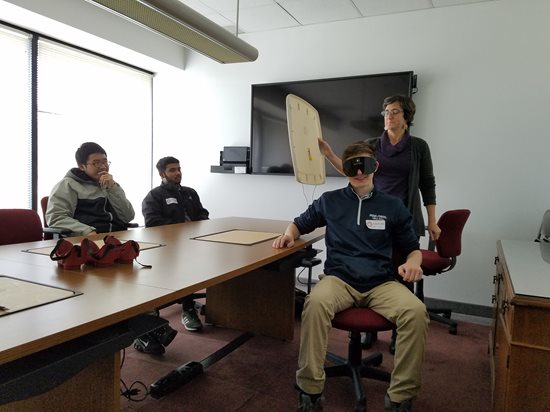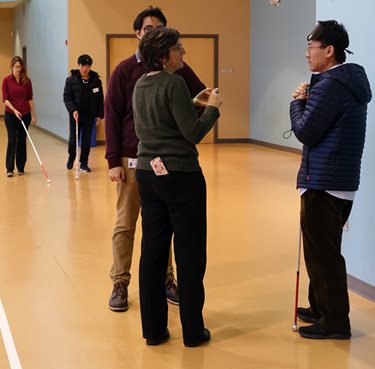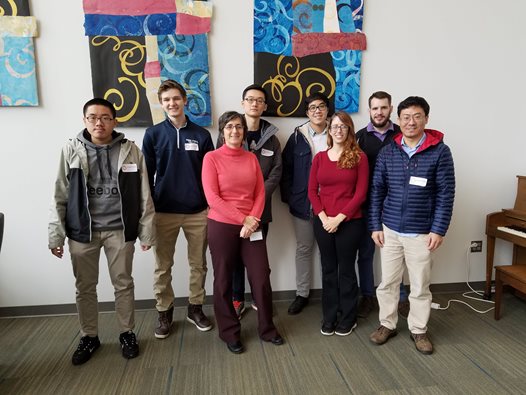
Students in the Blindness and Low Vision Studies (BLVS) program had the unique opportunity to collaborate with engineering students from Penn State Abington on the creation of a new electronic travel device for those who are blind.
For four weeks, Penn State students and Dr. Yi Yang, assistant professor of electrical engineering at Penn State Abington, met with BLVS students to better understand how blind individuals navigate the world and which electronic devices already exist to aid them. One of the main skills the group was interested in learning more about was echo location, according to Dr. Fabiana Perla, BLVS Department chair.
 “They’re working on echo location, which is the use of ambient sound to locate the presence of objects and walls,” she said. “While they are blindfolded and near a wall, the students demonstrate what it feels like to have a wall next to you and what it feels like not to have a wall next to you because the quality of the sound will be different. This is something blind people can use to detect intersecting hallways or objects in their way.”
“They’re working on echo location, which is the use of ambient sound to locate the presence of objects and walls,” she said. “While they are blindfolded and near a wall, the students demonstrate what it feels like to have a wall next to you and what it feels like not to have a wall next to you because the quality of the sound will be different. This is something blind people can use to detect intersecting hallways or objects in their way.”
Dr. Yang explained that the device Penn State students are currently developing relies on using echo location to help blind individuals orient themselves and be alerted of potential obstacles and their distance to said obstacles. The device consists of a computer, a pair of stereo headphones and a LiDAR (Light Detection and Ranging) device.
“We use the LiDAR technology to basically scan the surroundings, capture the structure information and then translate that information into soundscape,” Dr. Yang said. “We build a model where if an obstacle is on your right-hand side, it would generate a sound as if it comes from your right-hand side using stereo headphones. We use the frequency to convey the idea of distance.”
According to Dr. Yang, echo location is an instinctive skill in mammals such as bats and dolphins, but the ability has not been developed fully in humans.
“From a research point of view, we really want to figure out if we can mimic natural echo location with a human-designed system,” he said.
Working with the University’s BLVS students to better understand the way blind individuals process sensory information led the research team to alter its product to better aid users.
“We were designing our system from a purely engineering point of view without really knowing the customer side,” Dr. Yang said. “Now we have a much more defined view of what is needed and what is not. One of the biggest issues we had was that our original design was providing way more information to the user.” After saturating the user’s senses according to Dr. Yang, the tram realized they needed to find a way to provide essential information without overloading the user.

Dr. Yang and his team will be testing the latest model of the electronic travel device and working with Dr. Perla and the University’s BLVS students to devise an experiment that will adequately test the device’s ability to guide blind individuals.